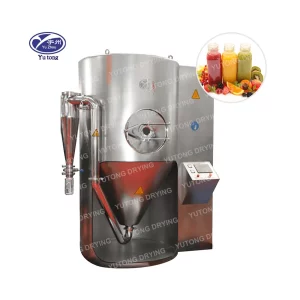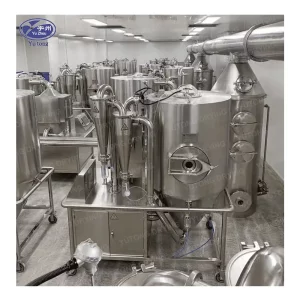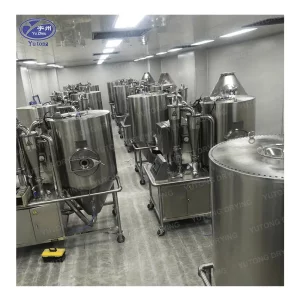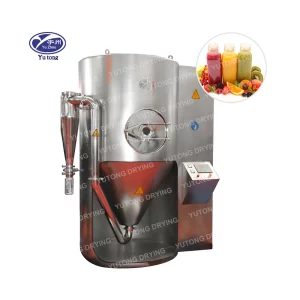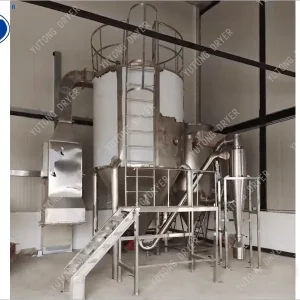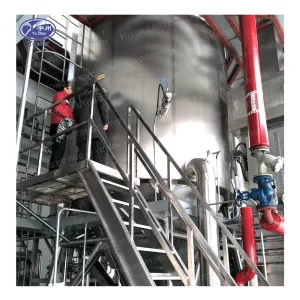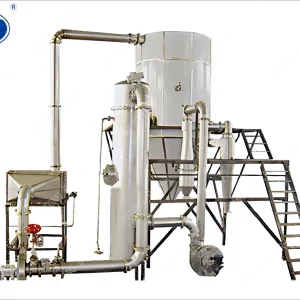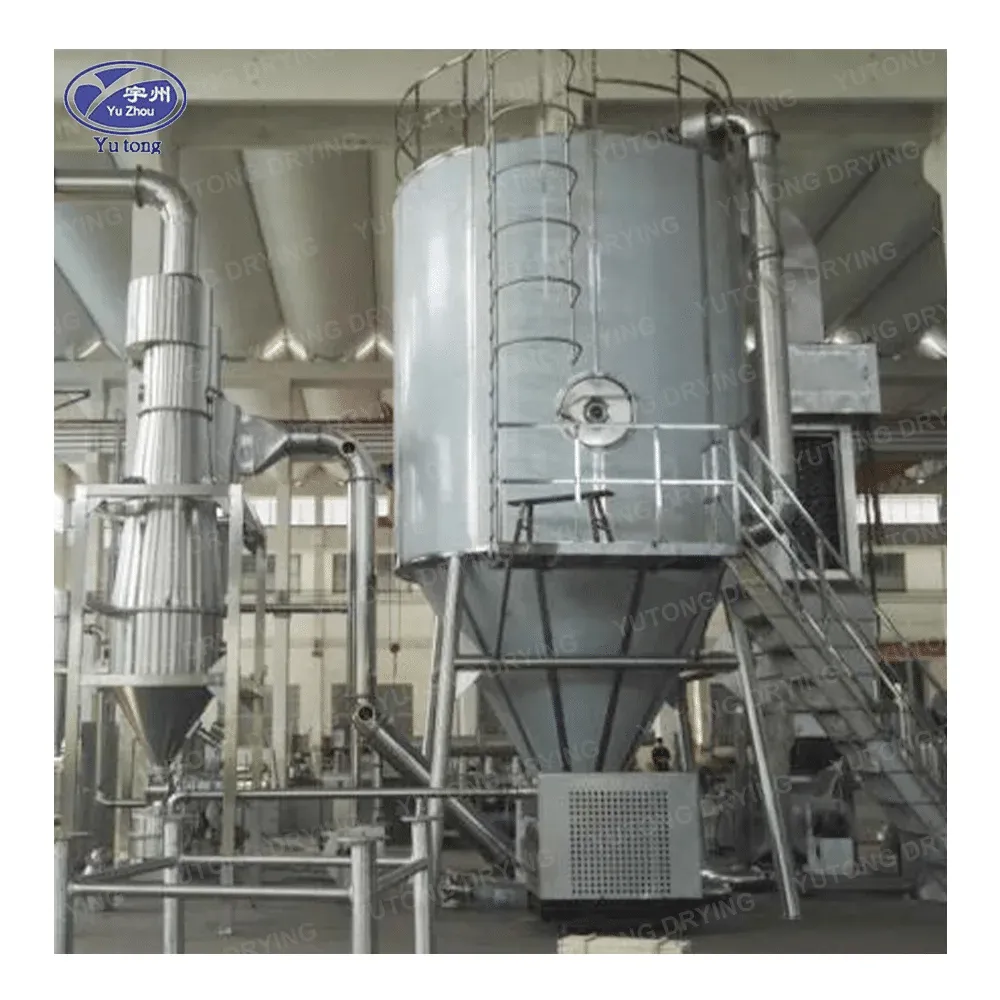In today’s highly competitive industrial landscape, finding ways to enhance profitability is crucial for the success of any business. Spray drying, a widely used technique for converting liquid substances into dry powders, presents several opportunities to improve financial performance. This article will explore in-depth strategies and considerations to help you maximize the profitability of your spray drying operations.
Spray drying is a complex process that involves multiple variables, each of which can have a significant impact on profitability. By carefully analyzing and optimizing these factors, you can achieve greater efficiency, reduce costs, and increase revenue. Understanding the intricacies of spray drying and implementing effective strategies is essential for long-term success.
Understanding the Cost Components of Spray Drying
To enhance profitability, it is essential to have a clear understanding of the cost components associated with spray drying. These costs can be broadly categorized into the following areas:
1. Equipment Costs
The initial investment in spray drying equipment is often a significant expense. This includes the purchase price of the dryer itself, as well as associated components such as atomizers, gas heaters, filters, and control systems.
When considering equipment purchases, it is important to evaluate the long-term durability and efficiency of the equipment. High-quality equipment may have a higher upfront cost but can offer lower operating costs and longer service life, ultimately resulting in greater savings over time.
Additionally, consider the scalability of the equipment. If you anticipate future growth in production volume, investing in equipment that can handle increased capacity can be a wise decision.
2. Energy Costs
Spray drying is an energy-intensive process, and energy costs can be a major expense. The energy required for spray drying comes mainly from heating the drying gas and powering the equipment.
To reduce energy costs, consider implementing energy-efficient measures such as using high-efficiency gas heaters, optimizing the drying process to reduce drying time, and implementing energy management systems.
Also, explore alternative energy sources such as solar or biomass energy if feasible. These sources can provide cost savings and reduce your reliance on traditional energy sources.
3. Raw Material Costs
The cost of the liquid feed and any additives or coatings used in the spray drying process can significantly impact profitability.
Source high-quality raw materials at competitive prices by negotiating with suppliers, exploring alternative suppliers, and considering bulk purchasing options.
Additionally, consider alternative materials or formulations that may offer cost savings without sacrificing product quality. For example, you may be able to use cheaper raw materials or find ways to reduce the amount of additives required.
4. Maintenance and Operating Costs
Regular maintenance and operation of the spray dryer are necessary to ensure its proper functioning and longevity. These costs include labor, spare parts, consumables such as filters and lubricants, and maintenance contracts.
Implement a preventive maintenance program to minimize downtime and reduce maintenance costs. This includes regular inspections, cleaning, and replacement of worn parts.
Train your operators to operate the equipment efficiently and safely to avoid costly mistakes. Also, consider outsourcing some maintenance tasks to specialized service providers if it is cost-effective.
Strategies to Enhance Profitability
1. Optimize Process Parameters
Fine-tuning the spray drying process parameters can have a significant impact on profitability. Parameters such as inlet temperature, outlet temperature, atomization pressure, and feed rate can affect product quality, energy consumption, and production efficiency.
Conduct experiments and trials to determine the optimal process settings for your specific product and equipment. Use process control systems to monitor and adjust the parameters in real time for consistent results.
For example, by reducing the inlet temperature slightly while maintaining product quality, you can reduce energy consumption and save on operating costs.
2. Improve Product Quality
High-quality products command higher prices and have better market demand. Focus on improving the quality of your spray-dried products by ensuring uniform particle size distribution, controlling moisture content, and minimizing impurities.
Implement quality control measures throughout the production process, from raw material selection to final product inspection. Use advanced analytical instruments such as particle size analyzers and moisture meters to monitor product quality and make adjustments as needed.
For example, by ensuring a narrow particle size distribution, you can improve the flowability and solubility of your product, making it more attractive to customers.
3. Increase Production Efficiency
Maximizing the production output of your spray dryer can significantly enhance profitability. This can be achieved by optimizing the loading and unloading procedures, reducing downtime for maintenance and cleaning, and improving the overall throughput.
Consider automating certain processes such as feeding, atomization, and powder collection to increase efficiency and reduce labor costs. Use scheduling and production planning tools to ensure smooth operations and minimize idle time.
For example, by implementing an automated feeding system, you can reduce the time and labor required for loading the liquid feed, increasing production efficiency.
4. Reduce Waste and Recycle
Minimizing waste generation is essential for reducing costs and enhancing profitability. Optimize the spray drying process to reduce losses due to overspray, incomplete drying, or product rejects.
Implement recycling and reuse strategies for waste materials such as excess powder or spent gas. For example, excess powder can be reprocessed or sold as a by-product, while spent gas can be filtered and reused to reduce energy consumption.
Also, consider implementing waste reduction initiatives such as reducing packaging waste and optimizing inventory management to minimize waste.
5. Energy Conservation
Implementing energy-saving measures can have a significant impact on operating costs and profitability. This can include using energy-efficient motors, installing heat recovery systems, and optimizing the insulation of the drying chamber.
Consider alternative energy sources such as solar or biomass energy if feasible. Conduct energy audits to identify areas for improvement and implement energy-saving initiatives.
For example, by installing a heat recovery system, you can capture and reuse the heat from the exhaust gas, reducing the energy required for heating the drying gas.
6. Market and Product Diversification
Exploring new markets and applications for your spray-dried products can help increase sales and revenue and reduce dependence on a single market or product.
Conduct market research to identify emerging trends and opportunities. Develop new products or formulations that meet the needs of different markets and customers.
For example, if you currently produce spray-dried food ingredients, consider expanding into the pharmaceutical or cosmetic industries where there may be demand for similar products.
7. Collaboration and Partnerships
Collaborating with suppliers, customers, and research institutions can lead to cost savings, improved product quality, and new business opportunities.
Work with suppliers to negotiate better prices and terms. Collaborate with customers to develop customized products and solutions. Partner with research institutions to access new technologies and expertise.
For example, by collaborating with a research institution, you may be able to develop a new spray drying process or product that gives you a competitive advantage.
Enhancing the profitability of your spray drying operations requires a comprehensive approach that considers all aspects of the process. By understanding the cost components, optimizing process parameters, improving product quality, increasing production efficiency, reducing waste, conserving energy, diversifying markets, and collaborating with others, you can achieve greater financial success. Continuously monitor and evaluate your operations to identify areas for improvement and implement innovative strategies to stay ahead in the competitive world of industrial processing. With careful planning and execution, you can turn your spray drying operations into a profitable and sustainable business.

